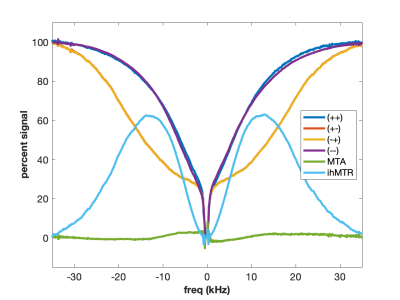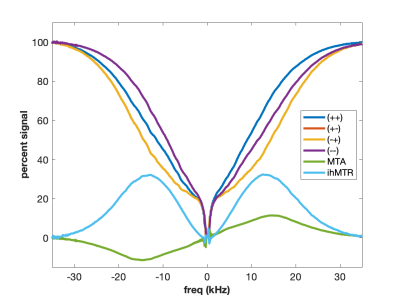Scott D. Swanson1
1Department of Radiology, University of Michigan, Ann Arbor, MI, United States
1Department of Radiology, University of Michigan, Ann Arbor, MI, United States
MT studies of model systems controlling MT asymmetry and ihMTR.

Figure 4. MT studies of CA:SD:BTAC. MT is generated by exchange of water protons with amide protons of SD and hydroxyl protons of CA. MTA is relatively small as the two exchange mechanisms balance. Note that the red line of the figure, (+-) RF saturation, is not visible as the yellow line, (-+) RF saturation, is identical and overwrites the (+-) line. T1d in this sample is long and eMT is much larger that conventional MT. This leads to a large ihMT signal.

Figure 6. MT studies of CA:SD:BTAC plus cholesterol. Cholesterol provides an additional hydroxyl proton for cross-relaxation and a different underlying chemical shift profile. Addition of rigid cholesterol increases MTA relative to pure CA:SD:BTAC shown in Fig. 4. The MT asymmetry of cholesterol is also very broad. ihMTR is decreased as cholesterol stiffens the membrane and decreases proton T1d times, allowing for more efficient intermolecular spin diffusion in the lipid matrix.